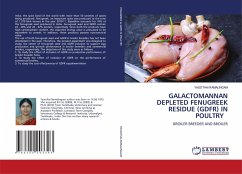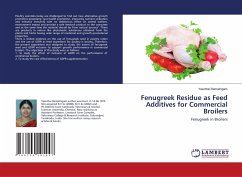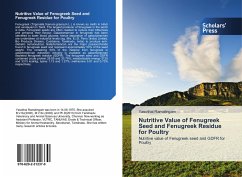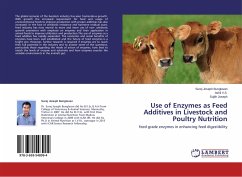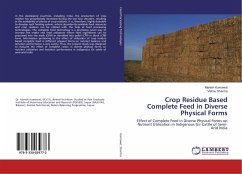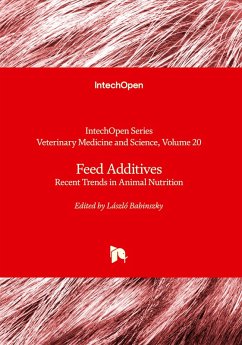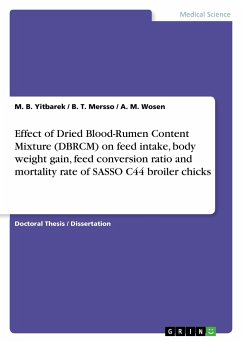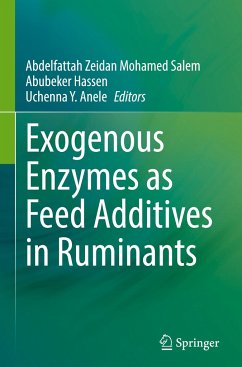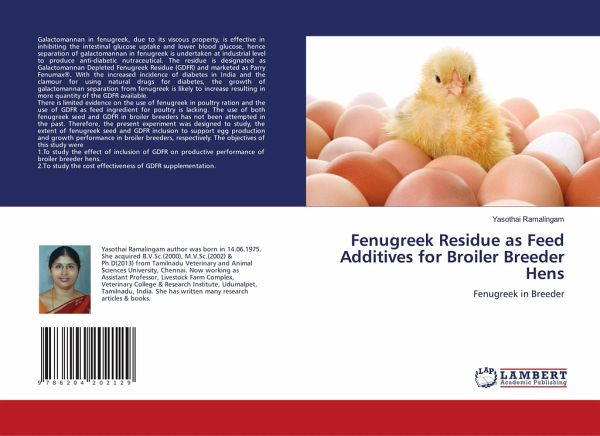
Fenugreek Residue as Feed Additives for Broiler Breeder Hens
Fenugreek in Breeder
Versandkostenfrei!
Versandfertig in 6-10 Tagen
36,99 €
inkl. MwSt.

PAYBACK Punkte
18 °P sammeln!
Galactomannan in fenugreek, due to its viscous property, is effective in inhibiting the intestinal glucose uptake and lower blood glucose, hence separation of galactomannan in fenugreek is undertaken at industrial level to produce anti-diabetic nutraceutical. The residue is designated as Galactomannan Depleted Fenugreek Residue (GDFR) and marketed as Parry Fenumax®. With the increased incidence of diabetes in India and the clamour for using natural drugs for diabetes, the growth of galactomannan separation from fenugreek is likely to increase resulting in more quantity of the GDFR available.T...
Galactomannan in fenugreek, due to its viscous property, is effective in inhibiting the intestinal glucose uptake and lower blood glucose, hence separation of galactomannan in fenugreek is undertaken at industrial level to produce anti-diabetic nutraceutical. The residue is designated as Galactomannan Depleted Fenugreek Residue (GDFR) and marketed as Parry Fenumax®. With the increased incidence of diabetes in India and the clamour for using natural drugs for diabetes, the growth of galactomannan separation from fenugreek is likely to increase resulting in more quantity of the GDFR available.There is limited evidence on the use of fenugreek in poultry ration and the use of GDFR as feed ingredient for poultry is lacking. The use of both fenugreek seed and GDFR in broiler breeders has not been attempted in the past. Therefore, the present experiment was designed to study, the extent of fenugreek seed and GDFR inclusion to support egg production and growth performance in broiler breeders, respectively. The objectives of this study were 1.To study the effect of inclusion of GDFR on productive performance of broiler breeder hens.2.To study the cost effectiveness of GDFR supplementation.



